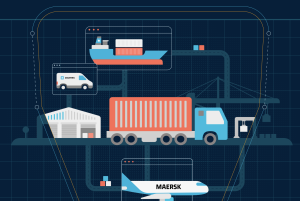This is the second in a series of 4 articles on the topic of generating and tracking output savings, with particular focus on the Managed Print Solutions (MPS) category. The focus of this article is the often delicate issue of “vendor contract re-negotiation”.
“Re-negotiating hardware/equipment rental agreements with vendors are generally difficult and can be a complex task. Generally, the existing rental agreements are signed by the customer (your organisation) and the vendor. Within this contract there is rarely provision for a friendly ‘exit-clause’. Therefore, before an organisation re-negotiates a fresh agreement, they must be very certain that they are acquainted with and understand the history of any existing rental agreement(s),” Jannes du Plooy, Chief Executive Officer of Solution WorX, told SmartProcurement.
Specific aspects that organisations need to consider, includes:
- Identify all devices subject to finance whether by rental or otherwise.
- Establish the cost of those devices at the time of acquisition compared to their present value.
- Were the devices acquired as new or second hand?
- Are any of the devices presently close to the termination date?
- When was it financed?
- The interest rate at the time.
- The exchange rate at the time.
- What are the annual escalations?
- Was there any settlement formula built into the financed amount?
- Who did the financing – in-house (the vendor), or externally (third party)?
- The state of your vendor relationship.
- The vendor’s desire to continue doing business with you.
- The vendor’s willingness to re-negotiate with you.
- Period from date of finance to date of re-negotiation.
- Time left to lapse/termination of the agreement.
“Re-negotiations must always be done in good faith. A simple rule of thumb is not to negotiate with the sales person as his/her commission is calculated and based on the highest amount achievable. That aside, sales people generally also do not have the authority to re-negotiate existing contracts,” Du Plooy continued.
During the fresh round of negotiations the vendor will generally seek a new contract with new hardware to be included in this contract. This generally serves to extend the finance period and to absorb the “loss” that may have resulted from the re-negotiations.
Another useful tip is to always steer away from including any new/additional hardware. Focus on the original hardware and the facts as it pertains to the aspects mentioned above. Also be well prepared with a fresh proposal as to how the new contract must look.
Never simply accept ‘freebies’ like a free laptop or TV as is the custom in the industry. Remember there is no free lunch and you need to understand exactly how the cost of the ‘freebie’ will be made up by the vendor.
With the wisdom of hindsight in your favour you can now negotiate for acquiring the use of the correct equipment that your organisation requires to optimally service its output demand. Furthermore, you can now ensure that the Service Level Agreement (SLA) meets your end-user requirements.
“The function of an MPS is therefore to provide you with all the technical and financial implications that you need to consider in order to decide on the most cost effective sourcing route. MPSs input is often invaluable and their services are paid for out of the savings they generate,” Du Plooy concluded.
Jannes du Plooy can be contacted on the details below:
Telephone: +27 86 170 5907
Cell: +27 83 397 7739
E-Mail: jannes@swx.co.za


























